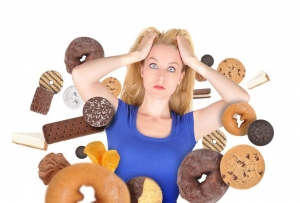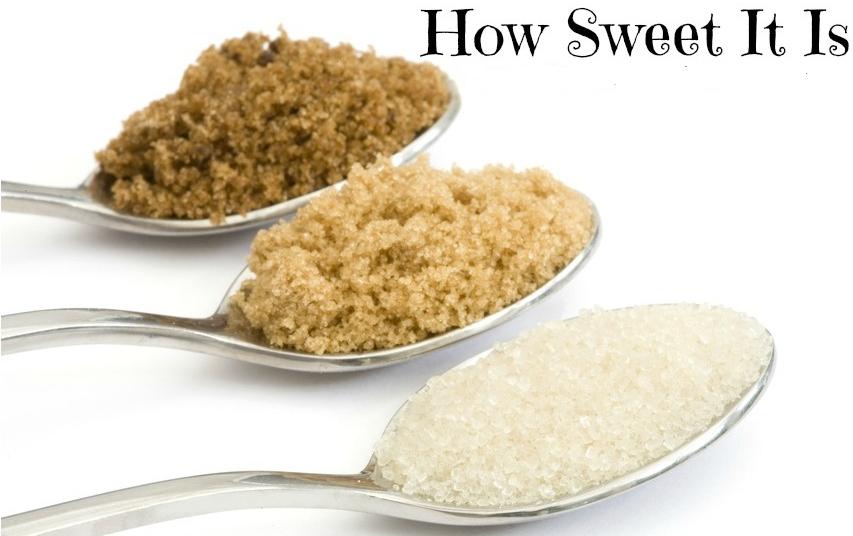 Like Pooh Bear and the honey jar, sweet treats are the comfort food of choice for most of us. It is possible that we have had powerful incentives set up since childhood that we unconsciously associate sugar as love or reward. (Ever get a lollipop after a doctor visit?) Why else would we call are loved ones “honey”, sweetie” and “sugar”.
Like Pooh Bear and the honey jar, sweet treats are the comfort food of choice for most of us. It is possible that we have had powerful incentives set up since childhood that we unconsciously associate sugar as love or reward. (Ever get a lollipop after a doctor visit?) Why else would we call are loved ones “honey”, sweetie” and “sugar”.
The Drug Effect Of Sugar
There is an equally strong biological urge here that can be “hard wired” to your brain. Making you predisposed to seek out sugar when you can find it. The addiction can be as strong and as hard to break as drug addiction. After all, sugar is a carbohydrate. The two monosaccharide (mono = one, saccharide = sugar unit) glucose and fructose are joined to form the disaccharide (di = two, saccharide = sugar unit) sucrose or table sugar. They are considered short chain or simple sugars. Carbohydrates are broken down to be used as your main fuel source (glucose) and metabolized as blood-sugar that fuels our brain and muscle. The purer the source or shorter the molecular unit, the faster it enters the blood stream, bypassing much of the digestive process.
Eating sugar raises blood sugar levels which in turn triggers an increase in the hormone insulin. The effect is more of a quick “jolt” rather than a slow rise in blood sugar. The insulin aides the blood sugar in entering the cells fast. The over production of insulin causes the blood sugar to crash as quickly as it rises, and we crave another hit. This is how sugar addiction begins.
 Sugar – The Feel Good Drug
Sugar – The Feel Good Drug
Sugar floods us with pleasure by stimulating the release of the neurotransmitter Serotonin and other mood-elevating substances. Research suggests that eating chocolate initiates a brain response similar to falling in love. And so our brains are conditioned to equate the sweet taste with a rapid infusion of energy and pleasure.
Allergic – Addictions
Allergic reactions to sugar and other carbohydrates can also stimulate pleasure and addictions for more carbohydrates. Your immune system produces aggressive antibodies to protect you from hostile foreign substances known as antigens. In addition to attacking viruses, they also attack food fragments that they perceive as foreign or toxic. The antibodies release a chemical called Histamine. Food reactions can occur so often that you may consider them normal. Common food reactions are; bloating, stomachaches, gas, constipation, low energy, joint pain, headaches, earaches, runny nose, postnasal drip and ADHD.
 Ironically the most “intolerable” foods are often your very favorites. Three food groups, all in the carbohydrate family, that are more commonly associated with allergy-addiction than any other food allergy, are the grains wheat, rye, oats, barley and cow’s milk and sugar. It is no surprise that so many people crave wheat products, milk products, and products made of mostly sugar. The three can be found everywhere “conveniently” combined as; cheese cake, chocolate milk, chocolate brownies and cookie dough ice cream. The three allergy-addictions have a unique effect on your brain that can make them irresistible. As with alcohol and drugs, the first taste can lead to trouble every time, if you are sensitive to these foods.
Ironically the most “intolerable” foods are often your very favorites. Three food groups, all in the carbohydrate family, that are more commonly associated with allergy-addiction than any other food allergy, are the grains wheat, rye, oats, barley and cow’s milk and sugar. It is no surprise that so many people crave wheat products, milk products, and products made of mostly sugar. The three can be found everywhere “conveniently” combined as; cheese cake, chocolate milk, chocolate brownies and cookie dough ice cream. The three allergy-addictions have a unique effect on your brain that can make them irresistible. As with alcohol and drugs, the first taste can lead to trouble every time, if you are sensitive to these foods.
Have you ever been on a diet that was low in carbohydrates except for vegetables, and higher in protein? Do you remember feeling better physically and mentally after being on the diet for a while? You may have put yourself on an allergy-free diet but didn’t know it. If you have you may want to consult a health care provider that can determine if you in fact have an allergy-addiction.
We now know that the body tries to calm the irritation caused by allergy foods by releasing powerful, soothing chemicals. Sugar consumption can trigger a brain release of powerful painkillers “the endorphins”. Casein, the protein in cow’s milk and gluten, a protein found mostly in grains, stimulate the production of exorphins. Exorphins are opiate chemicals very similar to endorphins. Over time, these pleasurable brain chemicals can become heavily addicting. You may find yourself craving a bagel with cream cheese and your mocha latte, so you can get that feeling of comfort you like so much.
Let us not forget sugars cousin, alcohol, the “ultimate carbohydrate” Alcohol addiction produces much of the same symptoms as sugar, such as; mood and energy swings, hangovers, headaches, agitation and irritability. And of course we all know about alcohols feel good side, and the effect it can have on a bodies addictive nature.
Sugar – Past and Present
One big difference between prehistoric times and now is that sugar then came from complex natural sources that had other nutritional qualities, such as fruit, honey, bark and leaves. This was a good thing when food was hard won for a battle to survive. But because naturally sweet food is seasonal, ripening with the sun in the summer or growing almost exclusively in warm climates, it was relatively rare. Over thousands of years our bodies used naturally sweet food safely and efficiently in this manner. But then what happened? As our knowledge evolved, we grew adept at refining pure sugar from its food source. Sugar practically became its own food group – energy dense, devoid of protein, fat and fiber, but still relatively rare. As shipping and trade routes grew, sugar became widely available. New refining technology put granulated white sugar on every table.
 Sugar – A processor’s Fantasy Come True
Sugar – A processor’s Fantasy Come True
Enter the modern era with its advanced food processing techniques and competitive food companies and presto! Refined sugar is everywhere and in everything. For the food industry it is a cheap way to create consumer need and improve the bottom line. Sugar adds bulk and texture, and makes consumers prefer their product over a less-sweet alternative. So over time consumers get sugar everywhere: from simple carbohydrates (white food), pure granulated sugar, and in other forms. These nutrient deficient heavy calorie containing foods, often take the place of more nutrient rich foods. So while we eat and gain weight, we’re actually are starving our cells.
 The Effect Of Sugar On Your Health
The Effect Of Sugar On Your Health
What happens to our metabolism on all that sugar? Remember, we’re still primitive at a cellular level. What starts out initially as a survival tool quickly becomes a crutch if sugar is easy to procure. The habit begins with a sugar craving, which is really a craving for an energy and serotonin surge. We unwittingly reprogram our biochemistry to perpetuate these cravings. Stress can exacerbate this process by needing more immediate serotonin and energy at that time.
With our busy lifestyles we often put our bodies through the binge/crash cycle several times a day. If you find yourself getting tired several times a day or the need to drink coffee throughout the day you may want to re-think that Danish you had for breakfast, the mocha latte you had on the way to work, the M&M’s you keep on your desk or the doughnut you had on your break. This is for some a normal every day eating pattern and it is only half a day. If you look at the huge increase in sugar in our diets this past century, particularity in the increased consumption of processed food, it marches in step with the increase in metabolic diseases.
 It is estimated that the average American consumes about 80 pounds of sugar each year. That’s 25 teaspoons every day for every man, woman and child. The biggest sources are the corn sugar and corn syrup found in beverages like soda and juice. Our bodies simply aren’t equipped to handle such large amounts of sugar on a daily basis. Even in the short term, too much sugar can trigger headaches, indigestion and tooth decay. If sugar was not as available as in the past we could break the addiction and the energy/crash cycle that goes along with it. But our love affair with sugar has been a slow and subtle evolution, with daily nudges from the food industry. Sugar sensitivity begins slowly and then gathers steam as your body loses its ability to make enough sugar-digesting enzymes to meet the demand.
It is estimated that the average American consumes about 80 pounds of sugar each year. That’s 25 teaspoons every day for every man, woman and child. The biggest sources are the corn sugar and corn syrup found in beverages like soda and juice. Our bodies simply aren’t equipped to handle such large amounts of sugar on a daily basis. Even in the short term, too much sugar can trigger headaches, indigestion and tooth decay. If sugar was not as available as in the past we could break the addiction and the energy/crash cycle that goes along with it. But our love affair with sugar has been a slow and subtle evolution, with daily nudges from the food industry. Sugar sensitivity begins slowly and then gathers steam as your body loses its ability to make enough sugar-digesting enzymes to meet the demand.
Women tend to notice it more during peri-menopause when excess sugar and other simple carbohydrates trigger symptoms of hormonal imbalance. Common symptoms of sugar sensitivity are: intestinal distress after eating (bloating/cramping) headaches, irritability, depression, aggression, panic attacks, mood-swings and insomnia. Long term intolerance combined with lack of physical activity can lead to type 2 diabetes, obesity and inflammation.
If it is a natural food why is it so hard to digest?
It’s the sheer quantity, not the substance itself that causes problems. Studies show that our bodies actually work harder in sugars after-burn to restore metabolic homeostasis. In the case of serotonin, too much sugar can lead to a real depletion. This can lead to depression and the cycle starts over again.


 Breaking Up With Sugar – Ending The relationship
Breaking Up With Sugar – Ending The relationship
Breaking free of sugar could very well be one of the toughest things you ever do. The rewards should be obvious, but I’ll shout ‘em out anyway.
- Gaining a sense that you’re in control of your food choices, your body, and your health
- Living longer (insulin, released every-time you eat sugar or carbs, is the aging hormone and being resistant to insulin is directly linked to how long you might live)
- Reducing risk of x-syndrome metabolic disease such as diabetes, as well as obesity and heart disease risk
- Weight loss
- Clearer and brighter skin
- Improved energy and balanced moods
- Creating healthy habits for a healthier life
 Failure to eat adequate protein and fat is a sure-fire way to set yourself up for sugar cravings and a carb roller-coaster. Be sure to start the day with animal protein and smart fats (nuts, avocado, coconut oil), and include the same at each meal.
Failure to eat adequate protein and fat is a sure-fire way to set yourself up for sugar cravings and a carb roller-coaster. Be sure to start the day with animal protein and smart fats (nuts, avocado, coconut oil), and include the same at each meal.
Never get over-hungry
Unless you’re actually fasting, avoid letting yourself get starving. You know that’s when you’re at your weakest. If a meeting or other appointment is going to mess up your meal-times then be prepared by carrying a portable protein-based snack.
Snack right
Eat mini-meals (small serve of meat and green veg) than actual snacks, but if you do choose to snack always make it protein-based. Eating low-fat yogurt and/or fruit for a snack might sound healthy but really it will just make you crave more sugar. Choose full-fat organic dairy, hard-boiled eggs, nut butters with berries, or coconut oil mixed with raw cacao and I guarantee you’ll last through to dinner easily.
Add Fruit to Your Meals
By adding naturally sweet stuff to your meals, like healthy whole and dried fruit, you can trick your taste buds into thinking they’re getting sweets – shutting down cravings before you reach for dessert. Try adding fruit to your salads, cereal, yogurt and hot dishes like apples with chicken, pears with pork and mango salsa with salmon. Use your imagination.
 Take Charge of the situation
Take Charge of the situation
Breaking your sugar habit is as much psychological as it is nutritional. It will take you a few weeks of following new snack and meal habits before it really becomes automatic, so in the meantime you need to be in charge of the situation. If that means skipping social events focused on food or workplace morning conversations around a tray of pastries for a few weeks, so be it. If it means leaving a room to get away from tempting treats, or jumping in the shower, going for a walk or brushing your teeth to avoid the half gallon of ice cream you bought for “the family”, so be it. It’s worth making the effort to break those old habits as you reach toward your goal of a healthier you who is in charge of their food choices.


